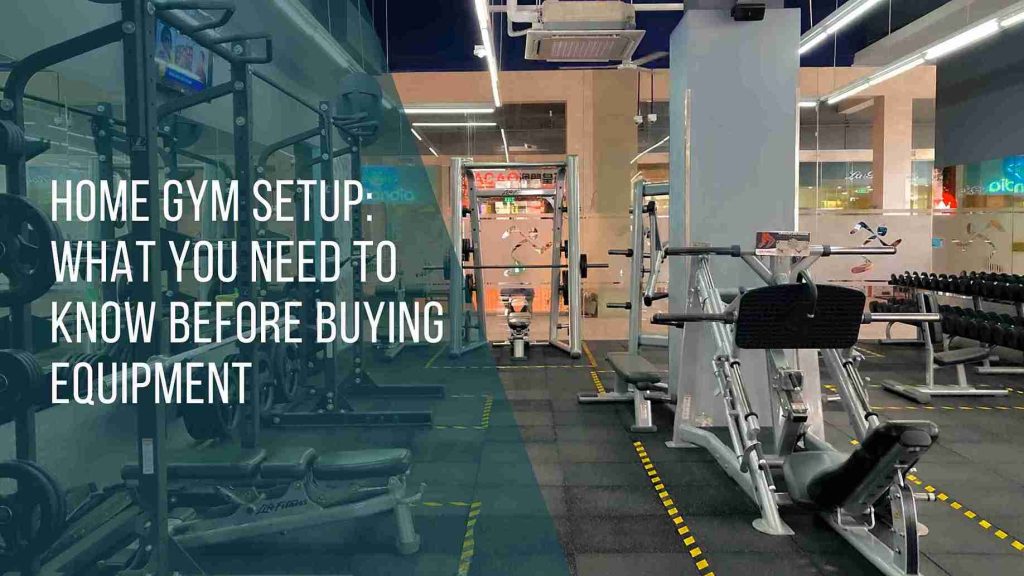Creating your own workout space at home is one of the best investments you can make for your health and convenience. But before you click “add to cart” on that shiny treadmill or set of free weights, it’s crucial to plan wisely. From room layout to professional setup, building a home gym takes more than just buying the gear. This guide walks you through everything you need to consider,so your fitness zone is functional, safe, and built to last.
Planning Your Space for Equipment
Before purchasing any gear, the first step is deciding where your home gym will live. The space you choose affects not only what you can buy, but how comfortably and safely you’ll be able to use it.
1. Measure Everything
Start by measuring your space. Include the length, width, and ceiling height. Don’t forget to leave extra room for movement and stretching, not just the footprint of the equipment. For example, a treadmill may be 6 feet long, but you’ll want a couple of feet of clearance behind it for safety.
2. Check Flooring
Your floors should be level, sturdy, and ideally non-slip. Concrete basements and garage floors are popular gym spots, but it’s smart to add rubber mats or interlocking foam tiles for cushioning and traction. These help protect both your floor and your equipment.
3. Consider Noise and Ventilation
Some gym machines can be loud. If you live in an apartment or have shared walls, choose quieter machines or consider soundproofing. Good airflow is also essential, so look for a room with windows or consider adding a fan system. A cool, well-ventilated space will improve your comfort and workout quality.
4. Power and Connectivity
Make sure you have enough outlets to support powered machines like treadmills, ellipticals, or smart workout mirrors. If you plan to stream classes or track your performance, a strong Wi-Fi connection is also important.
Thinking ahead about your space ensures your home gym installation service goes smoothly and saves you time and effort during setup.
Installation Tips for Large Machines
Once you’ve chosen your space and ordered your equipment, it’s time to think about installation. Large fitness machines often require more than just a few bolts and an instruction manual.
1. Unbox Carefully
Large machines arrive in multiple boxes. Open everything carefully and check that you have all the parts before beginning. Lay pieces out in an organized way to make assembly easier. Keep packaging nearby until the setup is complete in case returns or replacements are needed.
2. Follow Instructions Step-by-Step
This may sound obvious, but skipping steps or improvising can result in instability or safety issues. Be sure to fully tighten bolts only after you’ve aligned and attached all the necessary parts. Rushing the process can lead to misaligned parts or wobbling frames.
3. Use the Right Tools
Some machines come with basic tools, but having your own wrench set or power drill can make the job faster and more efficient. If you’re assembling multiple machines, investing in better tools will save you time and frustration.
4. Don’t Go It Alone
Most large fitness machines require two or more people to move and assemble. Not only is this safer, but it also prevents damage to your walls, floors, or the equipment itself.
5. Consider Professional Help
A fitness equipment setup expert knows exactly how to build your machines safely and quickly. Professionals are familiar with a wide range of brands and models and can make sure everything is level, balanced, and properly secured. Many people search for a home gym installation service to avoid the stress and physical strain that often comes with setting up bulky equipment.
Hiring someone also saves time and ensures your warranty stays valid, as some brands require professional installation for coverage.
Why Setup Matters for Safety
Even if you’re confident with tools, proper installation plays a major role in preventing accidents and injuries in your gym space. Let’s talk about why it’s more than just aesthetics or convenience.
1. Stability is Critical
Machines that aren’t level or fully tightened can rock, shift, or even collapse under your body weight. Whether it’s a bench, squat rack, or cable machine, stability keeps you safe and allows for full focus during your workouts.
2. Poor Setup Causes Wear
Improper assembly can put strain on the joints or frames of your equipment, leading to early wear and tear. This shortens the lifespan of your investment and could void any warranty coverage.
3. Cable and Electrical Safety
Equipment that plugs in should be connected securely and kept clear of foot traffic. Tripping over power cords or tangling them during workouts is a serious hazard. A professional home gym installation service will ensure everything is routed safely and neatly.
4. Anchor Heavy Machines
Some machines, such as squat racks or wall-mounted systems, need to be anchored to a wall or floor for stability. Incorrect installation can result in tipping or collapse. Properly securing your setup not only protects you but also the structure of your home.
5. Protect Children and Pets
If you share your home with curious kids or pets, setup becomes even more important. Unsecured weights or machinery can be dangerous. Professionals understand how to place equipment in a way that minimizes risk to others in your household.
In-home gym safety isn’t just about how you use the equipment—it starts with how well it’s set up.
Final Thoughts
Your dream of a functional, stylish, and safe workout space is completely achievable, but it starts with smart planning. From choosing the right room to assembling complex machines, each step plays a role in how much you’ll enjoy your gym and how safe it will be to use.
Don’t be afraid to invest in a fitness equipment setup service. Many people search for home gym installation service options in their area not just for convenience, but for peace of mind. Getting things right from the start leads to better workouts and a longer life for your equipment.
Whether you’re creating a minimalist setup with a few free weights or installing a full-on multi-gym system, take your time to plan and build it right. That’s the key to creating a space that motivates you to move every day.



